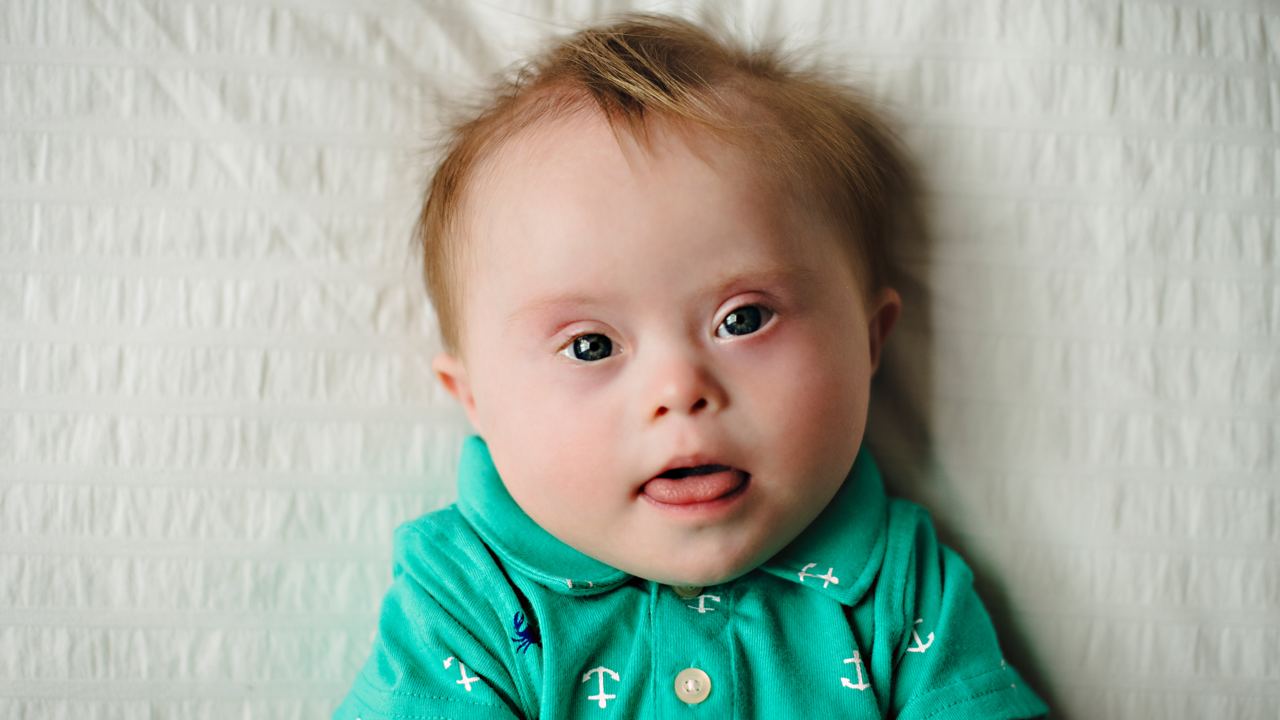Down Syndrome is a genetic disorder in which children are born with an extra copy of chromosome 21. The disease impacts how a person looks, their ability to think, learn, and reason. As an infant and young adult, down syndrome is associated with intellectual disability, flattened facial features and a weak muscle tone.
The prevalence of Down syndrome in live births worldwide is between 1 in 1,000 to 1,100. It is the single most common genetic chromosomal disorder, with approximately 3,000 to 5,000 babies born with the condition each year. A global event is marked on 21 March each year, World Down Syndrome Day, to raise awareness and to advocate the rights of people or children living with the genetic condition.
Characteristics of Down Syndrome
Each person with Down Syndrome is different, however, most children have mild to moderate cognitive impairment. The degree of learning disability and delayed development varies with each individual. There are certain physical traits that people with Down syndrome often share:
- Short height and stocky body shape
- Flattened facial profile and nose
- Atypically shaped ears
- Protruding tongue
- Excessive flexibility
- White spots on the coloured part of the eye (called Brushfield spots)
- Eyes that slant upwards and outwards
- Wide, short hands with short fingers
- Decreased or poor muscle tone
Contrary to popular belief, everyone with Down syndrome doesn’t look alike. Rather, they resemble their parents.
Types of Down Syndrome
Trisomy 21: The most common type, where there are three copies of 21 chromosomes instead of two in every cell of the body. It accounts for 95 percent of the cases.
Translocation: It accounts for 4 percent of all the Down Syndrome cases. In translocation, there’s only an extra part of chromosome 21. Though the number of chromosomes are 46, one of them has an extra piece of chromosome attached which causes the condition.
Mosaicism: It occurs when a child is born with an extra chromosome in some but not in all the cells and they tend to have fewer symptoms as compared to Trisomy 21. It accounts for 1 percent of the cases with down syndrome.
Why are some babies born with Down syndrome?
Our cells contain 46 chromosomes, 23 each from the mother and father. In people with Down Syndrome, all or some of their cells contain 47 chromosomes. This additional gene causes a baby to have Down Syndrome. It is not inherited but a rather one-off change in the sperm or egg.
The exact cause of this genetic condition is still unknown. It has been linked to the advanced age of a woman – a woman’s risk of conceiving a baby with down syndrome increases after 35 years of age.
However, 80 percent of children with Down syndrome are born to women under 35 years of age. Parents who have one child with Down Syndrome are at an increased risk of having another one with the same condition, therefore they must visit a genetic counsellor who would help them assess the potential risk and guide them properly.
Complications from Downs syndrome
People with Down Syndrome can have quite a few health complications, which might become more severe as they get older. About half of the children with Down syndrome are born with heart anomalies and depending on the condition a child may require surgery. Young children with the condition are also at an increased risk of Leukemia.
Other complications that a person with Down Syndrome is more susceptible to are:
- Sleep apnea
- Ear infections
- Hearing and vision problems
- Obesity
- Spinal problems
- Immune Disorder
For children and people with Down Syndrome, it is vital to get routine check-up done to maintain a healthy lifestyle.
Can Down Syndrome be prevented?
There’s no way to prevent Down syndrome. It is not an illness to be prevented, but rather an unexplained fault in the pairing of chromosomes in the early stages of the embryo development.
However, finding out whether the child has the chromosomal abnormality typical of Down syndrome, which is primarily trisomy 21, is possible with timely screening tests during pregnancy.
These screening tests are the following:
- Double marker test and NT Scan during 12th to 14th week of pregnancy
- Triple or quadruple marker test in 16-18 weeks of pregnancy, (can be done from 14 weeks till 22nd week)
These tests classify the risk of the unborn child having Down syndrome, but confirmation by invasive tests such as amniocentesis is needed in pregnancy where the risk is classified as high. This gives the couple (would be parents) a choice whether they want to continue with the pregnancy or not, since raising a child with Down Syndrome is a lifelong commitment.
Treatment for Down syndrome
There’s not one single or standard treatment that fits all. Every treatment is based keeping in mind the person’s respective needs, strengths and limitations. Therapies like speech therapy, occupational therapy, emotional and physical therapy and physiotherapy can be used in early intervention or throughout life to enhance the quality of life and promoting greater independence and development.
One important factor that influences the chances of making children with Down Syndrome is starting therapy as early in life as possible. Therefore, monitoring the child’s developmental milestones is very important. Medical advancements and timely intervention through therapies, treatments, and counseling have helped increase the life expectancy of people with Down syndrome.
All people with Down Syndrome must have equal opportunities to lead a fulfilling life – which is something the UN’s theme ‘Leave no one behind’ reiterates. With more understanding and awareness of the condition, communities have become more supportive and programs like inclusive education at all levels are a move in the right direction. Though the severity of the situation varies with each case, the good news is there has been a rise in the people with Down syndrome doing regular jobs and leading more independent lives.
Above all, as a society, we need to be more accepting and embracing to facilitate the participation of people with Down syndrome in the mainstream so that they can lead fuller, fulfilling lives.
The author is a Senior consultant in the medical team at docprime.com


)




)
)
)
)
)
)
)
)